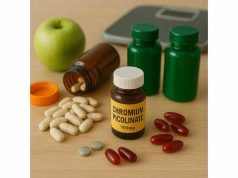
Choosing bariatric surgery is a medical decision with life-changing impact. The two most common operations—the sleeve gastrectomy and the gastric bypass—work in different ways, help different people, and come with distinct trade-offs. This guide explains how each procedure works, who qualifies, and what results to expect in the first two years and beyond. You will find clear criteria for candidacy, practical steps for preparation and recovery, and honest discussion of risks, nutritional needs, and long-term follow-up. If you are still comparing procedures with medications or non-surgical strategies, see our plain-language overview of medical and supplement options for weight management.
Table of Contents
- Bariatric surgery options: sleeve vs bypass
- Who qualifies and when surgery helps
- Sleeve or bypass: which fits your goals?
- How to prepare before surgery
- Risks, complications and who should avoid
- Results and outcomes you can expect
- Life after surgery: diet, supplements and follow-up
- Frequently asked questions
Bariatric surgery options: sleeve vs bypass
Sleeve gastrectomy (VSG) removes about 75–80% of the stomach along its outer curve, leaving a narrow “sleeve.” The pylorus (the valve at the stomach exit) stays intact, so food follows a normal path into the small intestine. The sleeve lowers hunger by reducing ghrelin levels in some people and promotes earlier fullness with small portions. There is no intestinal bypass, so nutrient malabsorption is limited, though deficiencies can still occur without supplements.
Roux-en-Y gastric bypass (RYGB) creates a small stomach pouch and connects it directly to the small intestine, bypassing the rest of the stomach, the duodenum, and a short segment of jejunum. This both restricts portion size and changes gut hormones involved in appetite and glucose control. Because part of the small intestine is bypassed, the risk of vitamin and mineral deficiencies is higher without diligent supplementation and follow-up.
How they compare at a glance
- Weight loss: Both produce substantial loss. Bypass often yields a greater average total body weight loss (TBWL) than sleeve at 12–24 months, though there is overlap.
- Metabolic effects: Bypass has a stronger track record for type 2 diabetes remission and reflux improvement.
- Reflux: Sleeve can worsen or trigger reflux in some; bypass usually improves moderate to severe GERD.
- Nutritional burden: Vitamin and mineral monitoring is important after both; the bypass requires stricter supplementation.
- Complexity: Both are typically laparoscopic and take 1–2 hours with 1–2 nights in hospital in uncomplicated cases. Bypass is technically more complex.
Right-sizing expectations
Surgery is a tool, not a cure. It makes a healthy pattern easier to follow by curbing hunger, changing taste cues, and limiting portion size. Lasting outcomes depend on protein intake, consistent supplements, follow-up visits, and routines for movement and sleep. If you are just starting to build those habits, review our concise guide to safe, sustainable change in healthy weight loss basics.
Who qualifies and when surgery helps
Standard criteria focus on body mass index (BMI) and weight-related conditions:
- BMI ≥ 40 (with or without other conditions), or
- BMI 35–39.9 with at least one significant comorbidity such as type 2 diabetes, obstructive sleep apnea, hypertension, nonalcoholic fatty liver disease, or debilitating joint disease.
- Some programs now consider BMI 30–34.9 with poorly controlled type 2 diabetes or metabolic syndrome when benefits outweigh risks.
These thresholds are a starting point, not the final word. Programs also weigh prior attempts at structured weight loss, your ability to commit to long-term follow-up, and whether surgery is likely to improve medical risks and quality of life.
Who tends to benefit most
- People whose weight-related conditions (e.g., diabetes, sleep apnea, GERD) are impacting daily life or require multiple medications.
- Those who experience strong biological hunger and loss-of-control eating despite structured diet efforts.
- Individuals whose work or caregiving responsibilities make large daily calorie deficits difficult without assistance from appetite and satiety changes after surgery.
Situations calling for caution
- Untreated eating disorders (e.g., bulimia), active substance misuse, or unmanaged major depression—these do not automatically rule out surgery, but they require stabilization and a closely coordinated plan.
- Severe reflux points toward bypass over sleeve.
- Inflammatory bowel disease, extensive prior abdominal surgery, or bleeding risks may shape procedure choice and timing.
Insurance and program steps
Most insurers require documentation of a supervised weight-management period (often 3–6 months), nutritional and psychological evaluation, and completion of pre-op education. If medications are part of your current plan, you can compare them with procedural outcomes in our guide to prescription options as you decide on next steps.
A realistic frame
Surgery is appropriate when the expected health gain outweighs surgical and long-term risks, and when you can commit to lifelong supplements and follow-up labs. The goal is not a specific number on the scale but better health, mobility, and medication reduction.
Sleeve or bypass: which fits your goals?
If reflux is a major problem, bypass more reliably relieves GERD; sleeve can worsen it or create new symptoms. A small subset of sleeve patients later convert to bypass because of uncontrolled reflux.
If type 2 diabetes is a top priority, bypass tends to achieve higher remission rates and faster medication de-escalation, especially when diabetes duration is shorter and insulin production is preserved. Sleeve still helps many, but effects on glucose are typically milder.
If you want the simplest anatomy, sleeve avoids intestinal rerouting and preserves the pylorus. There is no “blind stomach” or intestinal anastomosis, and endoscopic access to the stomach remnant is not an issue (because it is removed).
If you need the strongest average weight loss, bypass typically edges out sleeve at 1–2 years. That advantage can shrink over time if sleeve patients follow a high-protein plan and attend follow-ups consistently.
Ulcers, NSAIDs and nicotine
- After bypass, the connection between the new stomach pouch and intestine is vulnerable to marginal ulcers, especially with smoking or NSAID use (ibuprofen, naproxen). If quitting nicotine is not possible right now or if chronic NSAIDs are medically necessary, a sleeve may be safer.
- After sleeve, ulcers are less common, but reflux and irritation can still occur.
Nutrient risks
- Bypass: higher risk of iron, B12, folate, calcium, vitamin D deficiency without supplements and labs.
- Sleeve: risk exists, especially iron and B12, but is typically lower if protein intake and supplements are consistent.
Revisional options
Both procedures can be revised if needed (e.g., sleeve-to-bypass for reflux or slower weight loss). Your initial choice should still aim to match your top problems: reflux, diabetes control, weight-loss target, or simplicity. If you use diabetes medications now, read how gut-hormone drugs interact with appetite and surgery in our guide to GLP-1 medicines.
How to prepare before surgery
1) Medical workup
- Labs and imaging: blood count, iron studies, vitamins (B12, D), calcium and parathyroid hormone, HbA1c, lipid panel; sometimes ultrasound for gallbladder disease and sleep study for suspected apnea.
- Medication review: adjust diabetes drugs; manage anticoagulants; stop nicotine at least 4–6 weeks before surgery.
- Sleep apnea: start or optimize CPAP early to reduce surgical risk.
2) Nutrition steps
- Protein target: aim for 60–100 g/day pre-op to protect lean mass.
- Pre-op liver-shrink diet: many programs use 1–2 weeks of high-protein, low-carb meals to reduce surgical complexity.
- Hydration habit: practice separating fluids from meals, sipping throughout the day to reach 1.5–2 liters.
3) Behavior and environment
- Build a post-op pantry: protein powders you tolerate, ready-to-drink shakes, clear broths, sugar-free electrolyte drinks, and small utensils/plates.
- Movement baseline: daily walks prime recovery and lower clot risk.
- Support: set expectations with your household about no-pressure meal offers, help with errands, and time for follow-ups.
4) Vitamins and choosing quality
- Your team will prescribe a bariatric multivitamin plus calcium citrate. If you are buying your own, look for brands with independent testing and transparent labels. See what to look for in third-party testing standards.
5) Pre-op protein shakes
Most programs use shakes during the liquid phase. If you are comparing whey, casein, or plant-based options, see our guide to choosing and timing in protein shake basics.
6) Paperwork, insurance and logistics
- Confirm time off work (often 2–4 weeks for desk jobs).
- Arrange transport and a backup helper at home.
- Complete program education modules; many insurers require them for approval.
A simple pre-op checklist
- Quit nicotine; minimize alcohol.
- Hit your protein and hydration targets daily.
- Organize supplements and post-op foods now.
- Practice eating slowly and mindfully; chew to a puree.
- Walk 15–30 minutes most days.
Risks, complications and who should avoid
Short-term (first 30 days)
- Bleeding or leak from staple lines/anastomosis—rare but serious; signs include severe abdominal pain, rapid heart rate, fever, or shortness of breath.
- Blood clots (DVT/PE)—risk falls with early walking, leg compression, and sometimes blood thinners.
- Infection at incision sites or inside the abdomen.
Medium-term
- Stricture (narrowing) at the bypass connection; may need endoscopic dilation.
- Ulcers—particularly after bypass; sharply higher with nicotine and NSAIDs.
- Gallstones from rapid weight loss; some programs prescribe ursodiol for 6 months to reduce risk.
- Reflux—can worsen after sleeve; often improves after bypass.
Long-term
- Vitamin and mineral deficiencies (iron, B12, folate, vitamin D, calcium) without supplements and labs.
- Weight regain if grazing and liquid calories return or follow-up gaps occur.
- Hypoglycemia (rare) due to exaggerated insulin response post-bypass; managed with diet changes and, occasionally, medication.
Who should avoid or delay surgery
- Uncontrolled psychiatric illness, active substance misuse, or untreated eating disorders until stabilized with a clear support plan.
- Severe reflux leaning you toward bypass; if bypass is contraindicated, reconsider timing.
- Inability to commit to lifelong supplements and follow-up.
Medication cautions
- Plan alternatives to chronic NSAIDs if considering bypass.
- Discuss pregnancy plans; delay conception 12–18 months after surgery to avoid nutritional risks during rapid weight loss.
Dental and bone health
Long-term low calcium or vitamin D can weaken bones; calcium citrate and vitamin D matter. For iron deficiency, watch for fatigue, hair shedding, and restless legs—all improve with correction.
Choose tested supplements
To lower risk from poor-quality products, choose vitamins with independent certification; see our guide to third-party testing if you are buying outside your clinic’s formulary.
Results and outcomes you can expect
Weight loss trajectory
- 3 months: rapid drop as swelling resolves and intake is small. Many patients see 10–15% total body weight loss (TBWL) by this point.
- 12 months: common ranges are ~18–30% TBWL after sleeve and ~25–35% TBWL after bypass. Individual results vary by protein intake, activity, medications, and follow-up.
- 24 months: weight typically stabilizes. A 5–10% regain from the lowest point is common as the body adapts.
Health improvements
- Type 2 diabetes: medication reduction is frequent; remission is more likely after bypass, especially with shorter diabetes duration and preserved pancreatic function.
- Sleep apnea: many transition to lower CPAP pressures or discontinue with sleep specialist guidance.
- Hypertension and lipids: dose reductions are common; some normalize.
- Joint pain and mobility: improved walking tolerance and activity variety.
Quality of life and durability
Most patients report better energy, mobility, and mood, especially when they attend regular follow-ups and support groups. Five-year outcomes remain favorable when protein intake is prioritized, supplements are consistent, and grazing is minimized.
Plateaus and regain—what to do
- Audit liquid calories, snacking, and alcohol.
- Re-center on protein-first meals (60–100 g/day) and fiber.
- Strength training 2–3 days/week to preserve lean mass.
- If hunger returns strongly, ask your team about adjunct medications. Many programs use gut-hormone medicines after surgery to control appetite during plateaus; see how this works in combining medications with lifestyle.
Setting expectations
Surgery makes weight loss biologically easier, not effortless. You are still in charge of daily choices, but the procedures tilt the playing field in your favor—smaller portions, fewer cravings, better blood sugar control. With consistent habits and follow-up, most people keep a clinically meaningful amount of weight off long term.
Life after surgery: diet, supplements and follow-up
Hospital through week 2
- Day 0–1: small sips of clear liquids; walk early and often.
- Week 1–2: clear to full liquids as directed; focus on 48–64 oz (1.5–2 L) fluid and protein shakes to reach 60–80 g/day.
Weeks 3–6
- Advance to pureed then soft foods. Eat slowly, pause between bites, and stop at the first sign of pressure or chest tightness.
- Introduce tender proteins (eggs, fish, Greek yogurt, cottage cheese) and soft vegetables. Avoid dry meats and crusty bread early on.
Months 2–6
- Transition to regular textures. Each meal: protein first, then non-starchy vegetables, then a small portion of complex carbs.
- Sip fluids between meals; avoid carbonation and sugar-sweetened beverages.
Vitamin and mineral plan (typical)
- Bariatric multivitamin with iron (daily).
- Calcium citrate 1200–1500 mg/day in divided doses, taken away from iron.
- Vitamin D3 per labs (often 2000–3000 IU/day).
- Vitamin B12 (oral 350–500 mcg/day, sublingual weekly, or periodic injections).
- +/- Iron add-on for menstruating individuals or if labs fall.
Lab monitoring
- At 3, 6, and 12 months, then yearly: CBC, ferritin/iron, B12, folate, vitamin D, calcium, PTH, albumin, and others as directed. Adjust supplements based on results.
Lifestyle pillars
- Protein: 60–100 g/day depending on size and activity.
- Activity: daily steps plus resistance training 2–3 days/week.
- Sleep: aim for 7–9 hours, consistent timing.
- Alcohol: use caution; absorption is faster, especially post-bypass. Many clinics advise extended abstinence.
Mental health and support
Mood shifts are normal as routines change. Schedule regular check-ins with your care team. Support groups—online or in person—help with troubleshooting and accountability.
Pregnancy planning
Delay conception 12–18 months after surgery. Work with your bariatric and obstetric teams on prenatal vitamins and labs tailored to your procedure.
Frequently asked questions
Which is safer: sleeve or bypass?
Both are considered safe in experienced centers. Serious complications are uncommon for either. Bypass is more complex and carries a higher risk of ulcers and vitamin deficiencies; sleeve carries a higher risk of new or worse reflux. Choose with your team based on your risks and goals.
How long is recovery and when can I return to work?
Most laparoscopic cases involve one to two nights in hospital and two to four weeks before returning to desk work. You will start walking immediately and avoid heavy lifting while incisions heal. Fatigue is common for several weeks as intake and hydration ramp up.
How much weight will I lose and how fast?
Average ranges are ~18–30% total body weight loss after sleeve and ~25–35% after bypass by 12–24 months. Early loss is fastest in the first three to six months. Individual results vary with protein intake, movement, medications, and follow-up.
Will I need vitamins forever?
Yes. Both sleeve and bypass change intake patterns and, for bypass, absorption. A bariatric multivitamin, calcium citrate, vitamin D, and B12 are standard. Yearly labs help tailor doses. Skipping supplements risks anemia, bone loss, nerve issues, and fatigue.
Can I get pregnant after bariatric surgery?
Yes—many people have healthier pregnancies after weight loss. Delay conception 12–18 months to avoid nutrient deficits during rapid loss. Work with your bariatric and obstetric teams on supplements and lab checks before and during pregnancy.
What happens if I stop losing or start to regain?
First, review liquid calories, grazing, and alcohol. Re-center on protein-first meals, fiber, and strength training. Schedule a clinic visit for nutrition and lab review. Some programs add appetite medications to help during plateaus or regain.
Are the procedures reversible?
Bypass can be revised but is not simply reversed; it requires complex surgery with risks. Sleeve cannot be “put back,” but it can be converted—often to bypass—if severe reflux or inadequate weight loss persists. Prevention through follow-up is easier than revision.
References
- 2022 American Society for Metabolic and Bariatric Surgery (ASMBS) and International Federation for the Surgery of Obesity and Metabolic Disorders (IFSO): Indications for Metabolic and Bariatric Surgery — 2022 (Guideline)
- Clinical Practice Guidelines for the Perioperative Nutrition, Metabolic, and Nonsurgical Support of Patients Undergoing Bariatric Procedures – 2019 Update: Cosponsored by American Association of Clinical Endocrinologists/American College of Endocrinology, The Obesity Society, American Society for Metabolic and Bariatric Surgery, Obesity Medicine Association, and American Society of Anesthesiologists — 2020 (Guideline)
- Effect of Laparoscopic Sleeve Gastrectomy vs Roux-en-Y Gastric Bypass on Weight Loss, Comorbidities, and Reflux at 10 Years in Adult Patients With Obesity: The SLEEVEPASS Randomized Clinical Trial — 2022 (RCT)
- Gastroesophageal reflux disease following laparoscopic vertical sleeve gastrectomy and laparoscopic roux-en-Y gastric bypass: meta-analysis and systematic review of 5-year data — 2024 (Systematic Review)
- Patient-reported outcomes, weight loss, and remission of type 2 diabetes 3 years after gastric bypass and sleeve gastrectomy (Oseberg); a single-centre, randomised controlled trial — 2023 (RCT)
Disclaimer
This article is educational and does not replace personalized medical advice, diagnosis, or treatment. Always consult your surgeon or healthcare professional about your specific risks, medications, supplements, and timing, particularly if you have diabetes, sleep apnea, reflux, plans for pregnancy, or complex medical history.
Share and follow
If you found this guide useful, consider sharing it with someone who is weighing their options. For practical, evidence-based updates on weight management and metabolic health, follow us on the social platform you use most—Facebook, X, Instagram, or LinkedIn.










